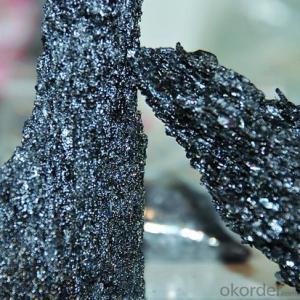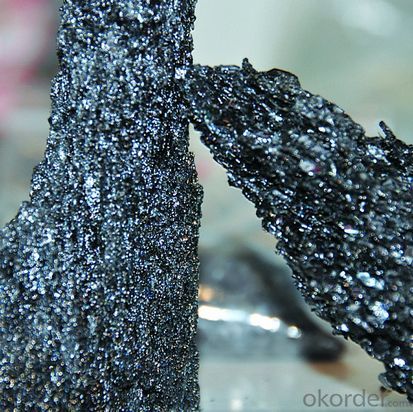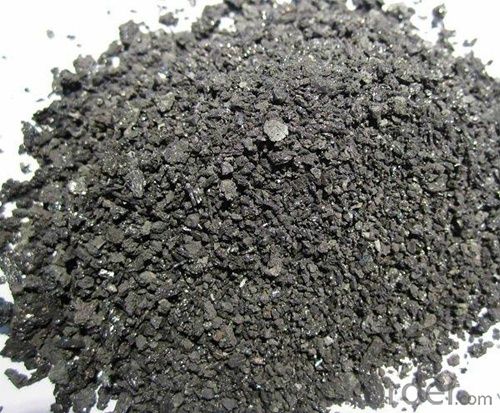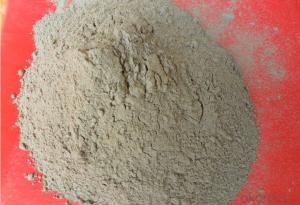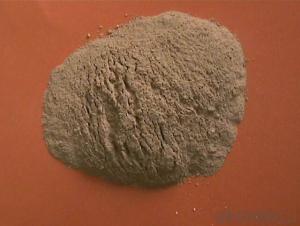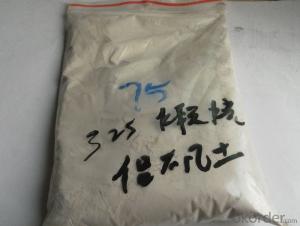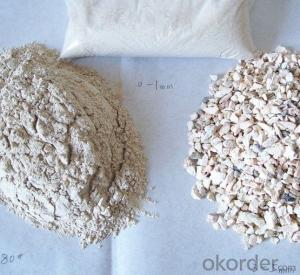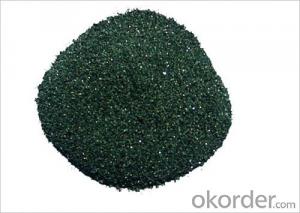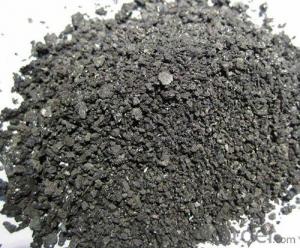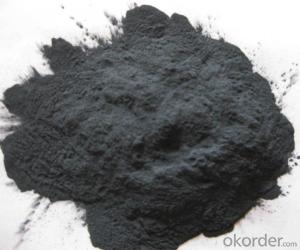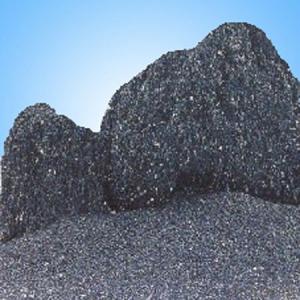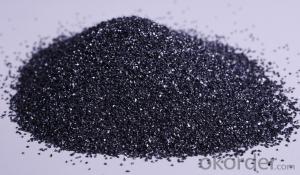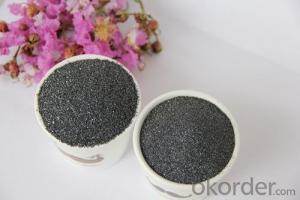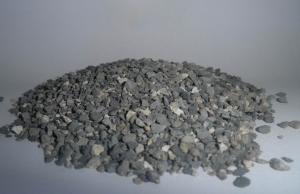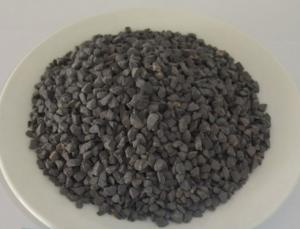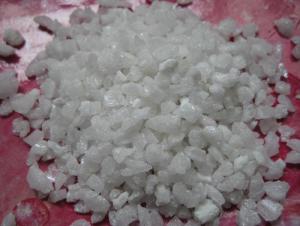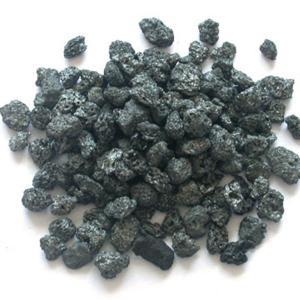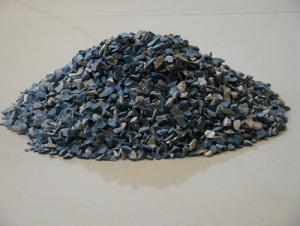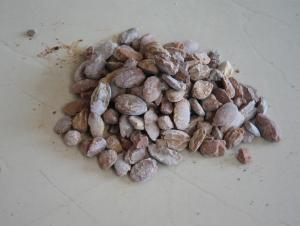Raw Materials for Refractory - Hy-SiO2 97% Silicon Carbide (SiC) High Purity Silicon Carbide - Factory Direct Manufacture
- Loading Port:
- China main port
- Payment Terms:
- TT OR LC
- Min Order Qty:
- 25 m.t.
- Supply Capability:
- 2000 m.t./month
OKorder Service Pledge
OKorder Financial Service
You Might Also Like
HY-SIO2 97% silicon carbide (SIC) high purity silicon carbide - Factory Direct manufacture
silicon carbide
Silicon carbide
silicon carbide (SiC) with quartz sand, petroleum coke (or coal), wood chips as raw material in electric arc furnace smelting made. In nature there are silicon carbide rare mineral, Moissanite. Silicon carbide, also known as Moissanite. In contemporary C, N, B and other non-oxide refractory materials in high-tech, silicon carbide is the most widely used and most economical one. Can be called emery or refractory sand. Silicon carbide is quartz sand, petroleum coke (or coal), wood chips (need to increase the production of green silicon carbide salt) and other raw materials at high temperature resistance furnace smelting. At present, China's industrial production of silicon carbide is divided into two kinds of black silicon carbide and green silicon carbide, are hexagonal crystals, accounting for 3.20 to 3.25, micro hardness of 2840 ~ 3320kg / mm2.
Uses
(A) as an abrasive, can be used for abrasive, such as wheel, Whetstone, grinding, sand tile and so on.
(2) as a metallurgical deoxidizer and high temperature materials.
Silicon carbide has four major application areas, namely
functional ceramics, advanced refractories, abrasives and metallurgical materials. Silicon carbide has been able to present a large supply of coarse material, can not be considered high-tech products, and high-tech applications nanoscale silicon carbide powder is impossible to form a short period of economies of scale.
Silicon Carbide Chemical Specification:
Spec | Green Sic | Black Sic | |||
Min % | Min % | Max % | Max % | Max % | |
SiC | 99 | 97 | 95 | 92 | 90 |
Free Carbon | 0.2 | 0.5 | 1 | 2.5 | 3 |
Fe2O3 | 0.2 | 1.0 | 1.5 | 2.0 | 2.5 |
SiO2 | 1.5 | 2.5 | 3.5 | 4.0 | |
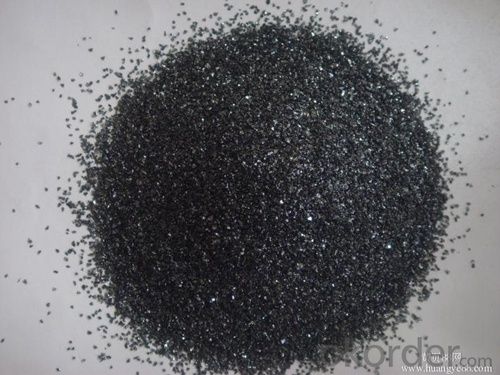
- Q: What does fire-resistant insulation coating have?
- Refractory thermal insulation material mainly refers to the inorganic thermal insulation material and composite thermal insulation material. According to the shape, it can be divided into: Finishing of fibrous shape, mineral?cotton, rock wool, glass wool, aluminum?silicate?wool, ceramic fiber, etc. Diatomaceous earth of microporous pile, calcium silicate, expanded perlite,expanded vermiculite,aerated concrete, etc. Foam glass of bubble shape, volcanic ash glass, foamed clay, foamed?concrete, gelatine powder polyphenyl granule heat insulating slurry of pasty form, etc. Their common feature is fire-retardant and firproof. It can be used in buildings with high requirements of fire?rating. Calcium silicate, aluminum silicate and asbestos can also be used for piping insulation of heat transport with high temperature. Hope it is helpful to you.
- Q: What's the fire?retardant material of roller shutter fire resistance door ?
- They are composited by inorganic materials, and the main components are perlite, inorganic adhesive and other special formula. It has flat and smoothe surface, unibody and stronger strength after molding. It has owned Chinese and Taiwan strength patent. It is fireproof, sound and thermal insulating. It has passed tests of Tianjin Fire Research Institute and Beijing construction institute. It is an ideal product.
- Q: How is the division of the fire resistant level of the rock wool board?
- The fire rating of European style rock wool board is level A , which uses Da Guang Beijing Jinyu rock wool board, with the main advantages are: 1, High acidity coefficient: The high coefficient of acidity greatly improves the life resistance and weather resistance of the rock wool board. 2, Hydrophobic air permeability: According to the picture, Jinyu Star rock wool is water-repellent, at the same time it also has breathability, so the liquid water is not easy to dip into the rock wool, and the water vapor and other gas molecules could pass through the rock wool. In particular, the insulation materials have this feature which enables the building to have "respiratory function" thus making the room more comfortable and preventing anti-mildew phenomenon happening indoor. 3, Environmental protection: The goldfish can survive freely, which just shows it is environmental; 4, High strength: The advanced pleating and curing technology make the rock wool board tensile and high compressive strength. It not only can be applied on the external wall thermal insulation and sandwich board core material, but also can be used to make structural cotton in the flexible waterproof roofing. Its quality is so stable that it is convenient in construction and durable in use. 5, Fireproofing: Not just talking about the fire rating, but the fireproofing time, which is generally up to two hours, and can be used for lining thermal insulation fire-resistant part of the glass curtain wall, through-wall pipe seal, pier?between?two?windows, window sill wall and other parts; 6, Derived advantages: Agriculture applies the soilless cultivation cotton;
- Q: What is the requirement of refractory concrete for raw materials? What is the main principle of commercial mixing station?
- Refractory concrete generally divided into three categories: lightweight concrete (used in insulation); refractory concrete (for refractory temperature requirements are not very high position, and can withstand a certain air scour); heavy refractory concrete (flow with higher requirements for refractory temperature parts, and can withstand a certain intensity). Mainly depends on the design temperature and the use of parts.
- Q: How many types do refractory bricks have? Where the quality of refractory material is best? What is the model?
- Sinosteel Luoyang (Luoyang Refractory Material Plant in the past): High alumina(mainly blast furnace), Gongyi. There are also a series of high-tech materials (silicon carbide, carborundum, etc.) a major producer of high alumina; silicious: Resistant material for steel, glass furnace, cement kiln); magnesia. Divide from uses and divide from chemical texture; silicious(glass furnace): Xinmi, Hennan Province, Lengshui River, coke oven, etc.). As for the models, Yixing and Changxing in Jiangsu Province: Haicheng, Liaoning Province; silicious, I do not understand your intentions; magnesia (nonferrous, steel refining; magnesia: High alumina brick; Dashiqiao area! Please put it in detail.
- Q: What's the difference between refractory metal raceway and fireproof raceway?
- Refractory metal is used to lay and control cables, while trunking is used to lay wires and communication cables; refractory metal is bigger (200*100-600*200), while trunking is smaller; refractory metal has bigger turning radius, while trunking mostly turns a right angle; refractory metal has larger span, while trunking has smaller span; their fixation and installation ways are also different.
- Q: What is the function of refractory in ceramics?
- It depends on what purpose you want to achieve. At the same time, part of special ceramics belongs to refractory. If is is to produce ceramic products, the aforesaid answers are very comprehensive.
- Q: How is the performance of refractory materials?
- It is a little difficult to answer. There are some requirement for refractory materials, such as fire resistance, softness, creep, thermal shock, abrasive resistance. Besides, requirements for construction performance include: Liquidity, plasticity and other linear change rate, volume density, strength (including high temperature) and all other important indicators must be tested the same conditions with the use of test conditions and test items like body density, strength, line changes in the basic project
- Q: Does anyone know fire-proof material of fireproof wooden door?
- Fireproof wooden door goes through the flame treatment, so it can prevent fire. Its principle: Fire-retardant treated timber has become flame retardant material itself and its fire endurance has increased. The commonly used method of fire retardant treatment for timber including: Spraying method, soaking method, boiling method, vacuum method, vacuum-pressure method.
- Q: Fire insulation and fireproof insulation board materials What is the difference in performance?
- What is the difference between fireproof insulation board and fireproof materials in their performance? Fireproof Materials prevents burning through insulating while others by chemical reactions. The overall heat conductivity coefficient of Insulation materials are generally lowered by thermal conductivity of the material itself and the structure of the material. Inorganic active insulation material uses ordinary cement, insulation stone, calcium powder, platycodon grandiflorum as the main raw material, produced after numerous tests with advanced production technology and chemical technology. Products features fire retardant,anti-aging properties and stable performance, low deformation coefficient, environmentaly friendly, compatible with the wall base layer and plastering layer. It has good security and stability and is as durable as ordinary buildings. Strong fire resistance: Fire insulation board is made of inorganic materials (cement), fireproofing level reaching to A1. As it does not burn, it is fireproof.
Send your message to us
Raw Materials for Refractory - Hy-SiO2 97% Silicon Carbide (SiC) High Purity Silicon Carbide - Factory Direct Manufacture
- Loading Port:
- China main port
- Payment Terms:
- TT OR LC
- Min Order Qty:
- 25 m.t.
- Supply Capability:
- 2000 m.t./month
OKorder Service Pledge
OKorder Financial Service
Similar products
Hot products
Hot Searches
Related keywords
